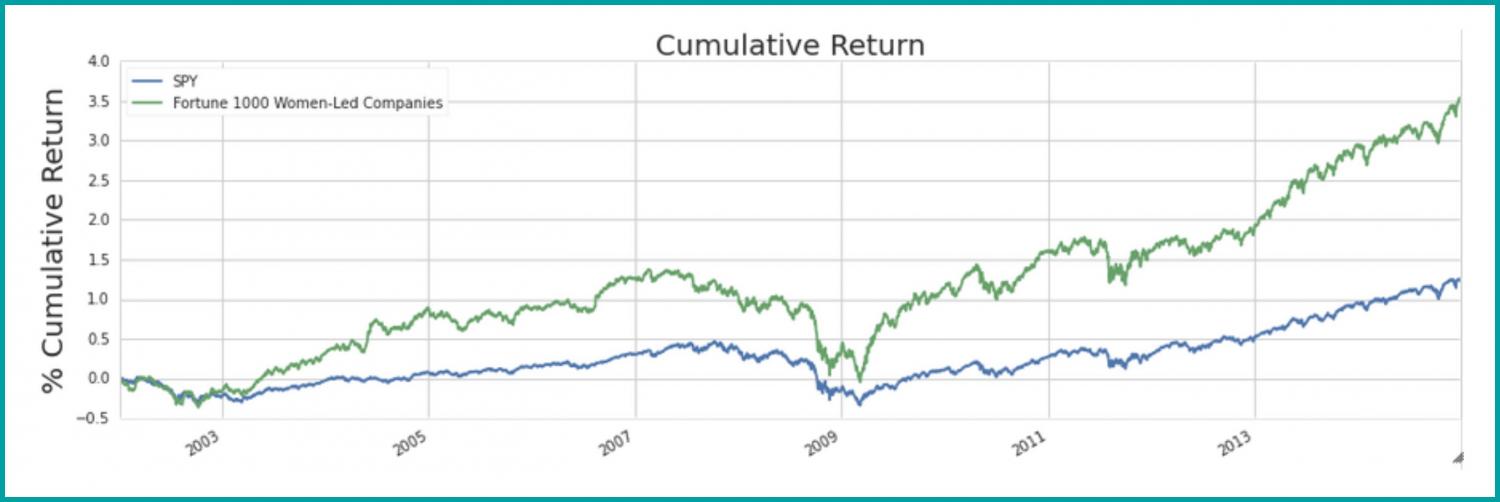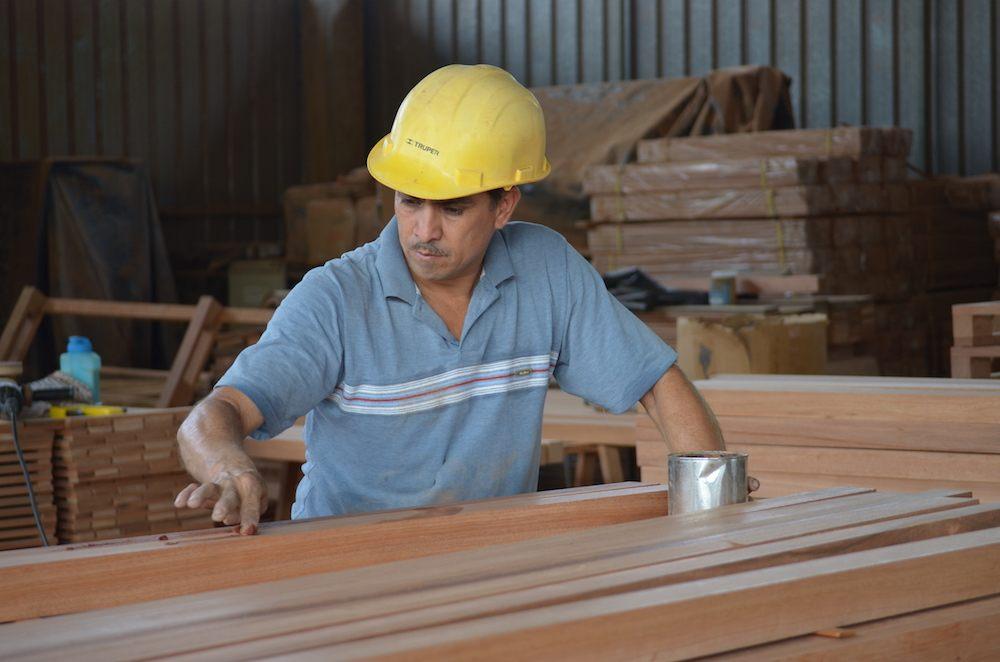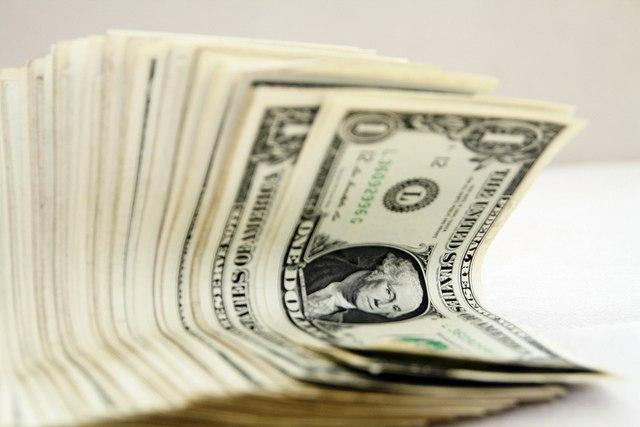Crunching Data, Breaking Silos: Women in Tech at TechCrunch Disrupt


By Marjella Alma
“We’re going backward in a field that is supposed to be all about moving forward,” Hillary Clinton said at the Watermark Silicon Valley Conference this past February. “We can literally count on one hand the number of women who have actually been able to come here and turn their dreams into billion-dollar businesses."
I’m not a feminist -- maybe you can call me an “idealist realist” -- and I believe in meritocracy in business. The best person for the job should do the job regardless of gender; but I am fascinated by how women in business and politics change things. In this blog, I am going to give credit to some amazing women I’ve come across along my journey as CEO and co-founder of eRevalue, albeit short.
I wonder if you will recognize this, but many times my husband (CFO at eRevalue) and I leave a meeting with completely different takeaways. “Were we in the same meeting?” we'll ask. Yes, we definitely were -- but with entirely different perspectives and emotions.
That mere observation, coupled with the fact that women are just now starting to climb the ladder, is at the very least remarkable and suggests how more women at the top may impact corporate decision-making. This will, I believe, lead to more well-rounded decisions -- why not call it “curvy decision-making” (I know, bad joke, I take it back) -- as issues will be analyzed and considered from more diverse vantage points.
Beyond a finger-counting exercise, the gender gap and related biases in Silicon Valley are palpable challenges that companies – large and small, established and emerging – face each day. A recent article in the Guardian noted that only 11 percent of executives and around 20 percent of software developers in Silicon Valley are women. To a large degree, this may have to do with personal preference, but I think our female data scientists at eRevalue would disagree.
What’s more, only 53 percent of big tech companies have women on their executive management team, compared with 84 percent for America’s biggest firms of all kinds.
Okay, so this is research that I like. Let’s deep dive into the facts, and have a good ol’ discussion on this one, as we do everyday at eRevalue.
A new study by Quantopian shows that women CEOs in the Fortune 1,000 drive three times the returns as S&P 500 enterprises run predominantly by men. How is this possible? The study compared the performance of Fortune 1,000 companies that had women CEOs between 2002 and 2014 against the S&P 500’s performance during that same period.
As you can see below, the 80 women CEOs during those 12 years produced equity returns 226 percent better than the S&P 500.
For some reason, at eRevalue, I have a lot of women around me. This was really not planned. These include our “women who code” in London, to our chairman in Toronto, head of North-American business development, and global Piloteers. We’ve built Datamaran -- our flagship software -- with many female thought leaders from HP, Onimpact Suncor Energy, Boston College Center for Corporate Citizenship and more.
Breaking down silos has been the foundation of my professional life, and gender is undoubtedly a key part of that. I’ve witnessed and supported the efforts of business leaders to go beyond the bottom line and focus on both short- and long-term value creation within their companies. I realize now more than ever how important it is to break down the silos that exist between men and women in the tech sector, and keep an industry that is all about no-boundary innovation moving forward powerfully.
That’s why I am beyond thrilled that eRevalue has been selected as one of the finalists for TechCrunch Disrupt New York 2015. This is an incomparable opportunity to engage directly with other men and women who are positively disrupting business at the largest tech event in New York, and to bring ‘sustainable business and long-term value creation’ to the forefront of the conversation -- but we need your help.
Okay, so here comes the ask -- a small one but with a potentially big impact.
On Wednesday, May 6, the audience and our network can vote for us to participate in the Startup Battlefield. In this conversation, we hope to explain our business model and reinforce how we help businesses embrace the risks and opportunities associated with some of the most complex issues of our time -- climate change, modern slavery and boardroom diversity -- with confidence and foresight.
Voting runs from 8 a.m. to 2 p.m. ET on May 6 and will all be possible via this link. Simply click on the “VOTE” button that will appear that day next to our company profile.
Let’s keep breaking down silos between men and women -- one positive impact at a time.
We're just about to set the sails of Datamaran V1, so you if you're interested in learning, feel free to get in touch to schedule a demo.
Image credit: 1) eRevalue 2) Quantopian
Marjella Alma is the CEO and Co-Founder, eRevalue Ltd. She is a former Director of the Global Reporting Initiative - the most widely used standard for sustainability reporting. She has had a front row seat in the ESG space for the past 7 years. She believes technology will be a game changer and founded eRevalue in March 2014 to drive the role of big data in ESG.
The Politics of Online Petitioning As We Head Toward 2016


By Randy Paynter
When you think of online petitions, protecting the oceans from oil exploration and wolves from hunters might come to mind.
Political parties, candidates and related advocacy groups are also using petitions as a way to build awareness for their platforms and reach prospective voters. A quick online search of current and former political petitions results in a growing number of examples.
There’s Ben Cohen, the Ben & Jerry’s co-founder who runs a group aiming to overturn Citizens United and garnered support for his petition to get big money out of politics before the 2016 election. No Labels, the Republican/Democrat hybrid group, is collecting signatures on a petition telling Congress we need a National Strategic Agenda. The Democratic Congressional Campaign Committee is sponsoring a petition asking others to join Hillary Clinton in her campaign to fix the broken campaign finance system. During previous election cycles, supporters of Sen. Heidi Heitkamp used a petition to rally support around her campaign. In Wisconsin, Sen. Tammy Baldwin used petitions in the same way.
As we head into the early stages of the 2016 election cycle, I think that online petitions will grow in use, joining the candidates’ typical repertoire of advertising, websites and well-oiled stump speeches. The segment is expanding with new entries, including Stand United, a petition site devoted to conservative campaigns.
A few reasons politicians sponsor petitions include:
- Petitions make constituents aware of where candidates stand in a quick, powerful way.
- Politicians can use petitions to rally supporters around issues that people deeply care about.
- Petitions strengthen signers’ resolve. A person who publically states they support an issue is more likely to act in concert with that belief by voting or donating to the candidate in the future.
- Petition signers spread the word and influence their friends in ways a candidate’s ad could never do, free of media clutter and challenger distortions.
- Petitions connect on issues and ask for nothing more than an electronic signature in order to make an impact – a welcome opportunity to make an impact beyond the frequent email requests for donations.
- Petition signers are likely donors. Traditional advertising has relied on look-alike modeling to reach potential voters. Someone signing a petition not only looks like a potential voter, they are actually showing “intent” to support the candidate’s issue – a much more powerful indication of support.
- Perhaps most importantly, once someone has signed a petition, then the door has been opened to long-term support. It starts with signers receiving email updates on the petition itself. It can continue should signers opt to receive updates from the candidate or organization, the relationship can continue. Further impact comes through Facebook shares, widening a candidate’s reach along with the bonus of valuable third-party endorsements. It is conceivable that one petition can spur a lifetime of dialog and support.
Research of Care2.com petition-signers revealed high levels of civic and political involvement:
- A full 62 percent have voted
- 24 percent have addressed or attended a public meeting
- 26 percent have written an opinion letter to an editor, newspaper or magazine
- Further, 62 percent have contributed to a nonprofit organization
It’s for supporters like these that Cohen has directed numerous petitions to enlist support for a Constitutional amendment to overturn Citizens United. A current petition has gathered almost 75,000 signatures in support. Human Rights Campaign, which lobbies for LGBT rights, drummed up 24,000 signatures in two days, along with media coverage, with a petition against Indiana’s controversial Religious Freedom Restoration Act.
Individual candidates take various tacks: During the 2012 elections, Tammy Baldwin’s team leveraged the public’s anti-Wall Street sentiment with a petition demanding the Justice Department intervene, which netted 5,241 signatures/emails and almost 200 Facebook and Twitter posts and aligned her with a cresting issue. The North Dakota Democratic-NPL (Nonpartisan League) Party simply asked people to sign its petition if they agreed it was time to elect a female senator in support of Heidi Heitkamp. It turns out, 14,906 agreed, and almost 6 percent of them shared on Facebook.
As candidates start to declare in the coming months for the next round of elections, I expect more political marketers will enlist online petitions to build their databases of supporters, market-test ideas and start that all important candidate/constituent dance toward the voting booth.
Image credit: 1) Flickr/Jason McHuff 2) Care2
Randy Paynter is the Founder & CEO of Care2 and helped pioneer online citizen advocacy with the launch of the PetitionSite.com. Randy holds an AB from Harvard University and an MBA from Stanford’s Graduate School of Business. Before starting Care2 and the PetitionSite.com, he co-founded one of the web’s first viral apps, electronic greeting card service eCards.com in 1995.
Unilever's 'sustainable brands' growing twice as fast as regular ones


At the London launch of its Sustainable Living Plan progress report, Unilever has revealed that its sustainable living brands such as Dove and Lifebuoy, are growing faster than regular brands.
Indeed, the FMCG giant's sustainable brands grew at twice the rate of its regular business, according to Paul Polman, Unilever ceo. “In a volatile world of growing social inequality, rising population, development challenges and climate change, the need for businesses to adapt is clear, as are the benefits and opportunities. This calls for a transformational approach across the whole value chain if we are to continue to grow. Consumers are recognising this too, increasingly demanding responsible business and responsible brands.
"Our experience is that brands whose purpose and products respond to that demand – ‘sustainable living brands’ – are delivering stronger and faster growth. These brands accounted for half the company’s growth in 2014 and grew at twice the rate of the rest of the business.”
The company also confirmed that it is on track to meet most of the Unilever Sustainable Living Plan goals, which it set in 2010 and reported significant supply chain progress: more than 55% of Unilever’s agricultural raw materials are now sustainably sourced.
Against the ambitious target to help improve the health and well-being of over 1 billion people by 2020, Unilever is nearly 40% of the way to reaching it. The company says that it has also enhanced the livelihoods of over 1 million people so far, having helped and trained 800,000 smallholder farmers since 2010 and provided 238,000 women with access to training, support and skills.
You can read the full progress report here.
Fast food chains show poor appetite for ethically-sourced produce


Fast food chains on the UK high street are being asked to add ethics to their menus in a new campaign by Ethical Consumer magazine.
In its latest product report, the magazine surveyed 22 of the UK's leading restaurant chains for their provision of ethically-sourced food including Fairtrade, free-range, organic and sustainable fish, discovering that not one fast food or restaurant chain is offering customers an ethically responsible menu.
Ethical Consumer says that of the restaurants which do offer an organic option these only represent a token effort and include four organic yoghurts from Beefeater, organic milk from Nandos and organic coffee at Zizzi. And while over a half of restaurants offer free-range eggs, none offer either free-range or organic meat.
Tim Hunt, editor of Ethical Consumer's product guide to fast food and restaurant chains described the results as 'extremely disappointing': "Given that both Fairtrade and organic food and drink are now mainstream items and are regularly bought by large numbers of people, the country's fast food and restaurant chains need to wake up and provide their customers with what they want.”
Picture credit: © Flytosky11 | Dreamstime.com - Fast Food Photo
Design as an Agent of World Benefit


In constructing our modern world, we have exceeded planetary boundaries that we didn’t even know existed. From the perspective of design, this represents an under-constrained development. In the past, designers focused on what they understood to be important: the economic constraints of cost, performance and reliability. It is only now that we are beginning to take the broader constraints that define a product’s impact on the planet into consideration.
This was the theme of my recent conversation with Lynelle Cameron, Autodesk’s senior director of sustainability and philanthropy. Autodesk is a world-leading provider of computer-aided design (CAD) software. When asked why she decided to come to Autodesk after working in sustainability for a decade at HP and elsewhere, Cameron said: “I realized that this little design software company was sitting on a gold mine of opportunity.
"If we could embed ecological intelligence into software, that would make it easy for designers of buildings, highways, cities, consumer products, you name it, to make better decisions about what is being designed, without needing to be experts on things like energy, materials, water and all that.”
That has been Cameron's primary focus for most of her eight years at Autodesk, though it’s recently been expanded to include the company’s philanthropy. She has been working to better align giving with “Autodesk’s core business of design, as applied by those working in the social sector as well as early stage startups that are using design to tackle some of today’s most epic challenges.”
This builds on earlier efforts by the company to make its software available to clean-tech companies.
Cameron speaks of designers almost in Rodney Dangerfield terms, as being overlooked and under-appreciated. But at the same time, she recognizes that the door is beginning to open for designs that embrace and embody sustainability principles to become more fully appreciated in the marketplace. Autodesk is well-positioned to help creative types tackle sustainable design with tools that provide the electronic equivalent of a sustainability guru looking over their shoulders and guiding them as they produce their solutions.
In the world of buildings, for example, Autodesk offers multiple tools for new high-performance buildings that include energy analysis, lighting and daylighting, simulations, and airflow modeling, all of which are aimed at optimizing the design. Additional tools, such as Rapid Energy Modeling Software, are aimed at retrofitting existing building to improve their performance. This application will enable users to create a complete 3-D model of a building directly from photographs. The model can then be used to optimize a retrofit.
With tools like these in hand, those aiming to make better, more sustainable products might be limited only by their imaginations.
Autodesk is also helping a number of startups get off the ground. Qbotix makes robots to adjust the positioning of solar panels. A few robots can take the place of tracking systems on dozens of panels, which can help reduce the overall system cost. That’s not to be confused with Q-bot, a small robot that can be used to perform jobs like spraying insulation in difficult-to-reach places like beneath floorboards. D-Rev develops and distributes bio-medical devices such as prosthetics for people living on less than $4 per day, while SolePower makes a shoe that captures energy produced by walking. The energy can then be used to charge a cell phone. MASS Design is an architectural design group that pushes the envelope on buildings with its holistic approach to design. Finally, there is Proximity Design, a group in Myanmar that develops affordable and useful items for local farmers that improve productivity while reducing environmental impact. Its work has reached over 2.5 million people, adding over $50 million of additional income.
As all products have embedded energy that went into their production, they also have embedded intelligence bestowed by their designers. Smart tools can help designers work smarter, worrying about the hundreds of details for them and thereby unleashing their creativity. A world comprised of smarter products will likely be more efficient, more sustainable and a better place to live.
Image courtesy of Autodesk
Method Opens LEED Platinum Factory in Chicago


Long credited with putting fun — and sustainability — into home cleaning products, Method has taken a step that goes far beyond “zero waste” and has become the mantra of other cleaning products and CPG companies. One year after announcing its plan, the iconoclast company opened its South Side Soapbox factory last week in the Pullman Park district of Chicago. Cradle to Cradle pioneer William McDonough + Partners designed the factory, the first such LEED Platinum certified facility within this sector.
The factory’s opening is just another step for Method as it has shaken up not only the cleaning products industry, but also the way business is done period. The company has held onto its “weird” corporate culture, even after its acquisition by the Belgian cleaning products company Ecover. Instead of focusing on its products’ “green” features, Method has made them cost-competitive, as well as cool, chic and artistic, nudging consumers to keep those sleek bottles on display in kitchens and counters instead of hidden under the sink with the bug spray. Plastic from the Pacific Garbage Patch has found its way into Method’s plastic bottles, and the company has also been active in pushing Congress to update federal chemical safety laws. Its products have long been available to the mass market; they have been on for sale at Target for years. The new factory in Chicago proves even more how forward-thinking this funky soap company has become.
Clean energy will power the South Side Soapbox, which sits on 22 acres. A refurbished turbine onsite will provide wind power, while solar energy trees will contribute electricity as well; the company says it will buy renewable energy credits (RECs) to ensure the facility runs on renewable power for at least two years.
Additional features also help make the factory operate with maximum energy efficiency. A 1,500-square-foot covered walkway will keep workers and visitors cool; the light-reflecting concrete and roof will reduce solar gain; a 120-gallon (455-liter) solar heating system will reduce dependence on the local grid for heating; and skylights will also keep the facility light and airy during the day.
Another cooling feature is a 75,000-square-foot green roof and urban farm, designed in a partnership with Brooklyn’s Gotham Greens. According to the company, the urban farming operation will be able to produce up to 500 tons of produce annually while reducing energy consumption and storm-water runoff.
Method is positioning the factory as a way to have a positive impact on Chicago. This is not the walled-off factory laced with barbed wire of your grandparents’ generation; the public will have access to the space, which includes 19.5 acres that are undergoing restoration as a wildlife preserve. The company also says it will plan to lead public tours focused on clean energy, hydroponic farming and sustainable manufacturing.
Method’s latest venture goes above and beyond the zero-waste plants that have become the narrative of companies such as Unilever, P&G and even GM. Method is going many steps further, leading by example, making as many investments as possible to make its operations lean and green, and becoming an active stakeholder within the local community. This factory truly represents the three Ps of sustainability: people, planet and profit.
Image credit: Method
Making a Market Deep in the Rainforest


“To make a market is very difficult,” José Román Carrera told me as we walked the grounds of Forescom, a Rainforest Alliance and FSC-certified timber processing plant.
No Joke. Román Carrera runs the Training, Extension, Enterprises and Sourcing (TREES program) in Latin America for Rainforest Alliance. His job is to save the rainforest by helping people who live in protected areas to collect, sort and sell timber and non-timber products. This is easier said than done since the people he works with often lack any formal education, and the products are things most Americans have never heard of. Yet, despite the odds, Rainforest Alliance -- together with local partners -- developed 182 collectives, each with their own registered "concession" or product. More than 100 of these collectives are in the Petén region of Guatemala, on the edge of the Maya Biosphere reserve.
"When we started, very few people believed these communities would be able to manage the concessions," Marcedonio Cortave, the founder and director of ACOFOP, explained through a translator. "They thought it was better to give the concessions to companies and let them hire the locals to do the work."
But groups banded together to express their desire for concessions to be awarded at the community level. "We proved that if you give the communities the opportunity to learn, they do learn," Cortave shared with pride.
The Maya Biosphere reserve is divided into three zones, which allow for varying degrees of human interaction. The core zone (which makes up 36 percent of the reserve) is a national park where only scientific research and tourism are allowed. In the multiple-use zone (40 percent of the reserve), low-impact natural resource activities are allowed with approval on a project-by-project basis. Finally, in the buffer zone (24 percent) -- a 15-kilometer band that runs along the south border of the park -- a variety of activities are allowed, including agriculture.
Rainforest Alliance projects exist in the multiple-use zone. Local communities have called this area home for generations, and many lack the global connections to build a market for the products they have at their disposal. That's where the TREES program comes in: TREES helps the communities get set up to harvest and process non-timber rainforest products like xate, chicle and ramon nuts, as well as hardwoods like mahogany. To meet the strict requirements of the multiple-use zone, communities can only cut two trees per hectare every 25 years, and each concession faces similar limits to ensure re-growth. These limitations mean that the groups must get creative and add value wherever they can to maximize revenue.
"Learning by doing"
This has all been a work in progress with a lot of "aprender haciendo," or learning by doing, to find buyers and prepare materials to spec.
In the case of timber, Rainforest Alliance helped to start Forescom, a timber processing facility to add value to the timber in country, so that it could command a higher price. Forescom works with the 12 forestry collectives in the multi-use zone. The value-add can be everything from drying the wood, to cutting a tree into beams or other lumber, to actually building furniture.
In the process of "learning by doing," there have been mistakes. The first iteration of Forestcom was a lumber-buyer or distribution function. But without buyers already selected, the wood went unsold and the company lost money. Now they work on spec, securing purchase orders -- which then go out to the collectives, before any wood is even cut down.
Forescom had to learn which wood species were best for each type of application, from flooring to decking, demonstrate that suitability, and dry wood to the appropriate moisture level for maximum durability. Even drying the wood was a learning process. The organization spent $60,000 on a kiln and used trial-and-error to determine what temperature and for how long to heat each type of wood.
Now, Forescom has 14 buyers all around the world and employs 16 workers during peak season. "They've got more money than Rainforest Alliance," Román Carrera joked.
Ensuring transparency for maximum value
The fact that Forestcom only works with the certified collectives is an important piece of the puzzle. It helps maintain the chain of custody that allows international buyers to feel confident that they are buying responsibly-harvested wood.
The chain of custody begins deep in the rainforest. We traveled three hours on a bumpy dirt road to reach the community of Carmelita, where 380 people reside; it is Rainforest Alliance's largest and most successful collective in Latin America. The collective was formed in 1996 to extract wood, and now the community is also certified for chicle, xate (an ornamental plant) and allspice. The wood Carmelita residents extract is the community's most lucrative product. It is FSC and Rainforest Alliance certified, and each log the community extracts can bring in as much as $3,300. Seventy percent of the community's income came from timber last year, and the community only had to fell 356 trees.
To get a premium like that, each tree is carefully selected for size, age and location, noted on a rainforest map, and felled by three men. The lumberjacks carefully plot how to bring down the tree in order to maximize the amount of high-quality wood they capture. The direction the tree falls is planned to precision to make sure that the tree doesn't take down other valuable trees or community members on its way down. Once cut, the stump and tree are marked with the same number that is noted on the map. This number will stay on the wood as it works its way through the chain of custody. All these careful measures are worth it, as there is a 66 percent premium for the certified wood.
Juan Antonio Perez y Perez, vice president of the collective, told me through a translator that he is very happy to be with the collective. "If I wasn't vice president, I know I can always take a bag and go collect xate." He earns enough money in one month to buy a 100-pound bag of corn -- something it would take three months to grow if he were farming instead.
Residents use the premiums they earn to further the community with projects like expanding health facilities, hiring teachers to educate the children of the community, and even sending some teenagers to Spain to learn carpentry so that the community can continue to add value to its timber resources.
What next?
As far as TREES is concerned, it's onward and upward from here. Román Carrera continues to seek communities that could benefit from a concession. If they struggle to get their collective off the ground, he sends them to Carmelita to learn how it's done.
While this program is clearly successful at its dual goals of economic advancement and environmental protection for rainforest communities, its future hangs in the balance. The contracts were assigned for 25 years, and Carmelita is already on year 18. Guatemala's political elite are known for corruption. The only thing that will stop them from selling the Maya Biosphere Reserve off to commercial developers is political pressure, both from inside and outside of Guatemala.
If you want to see this wonder of the world remain protected, reach out to UNESCO (phone and email addresses for the in-country contact in the link) and pledge your support.
Image credit: Jennifer Boynton
Travel and accommodations for this reporting were provided by Rainforest Alliance
The Quick & Dirty: Minimum Wage ... Hold the Applause


The minimum wage craze seems to have hit us from every angle. It seems as if every company is finding a few extra spare pennies to show us how deeply they care about their workers. Yes, it is time to rejoice! Minimum wages are hitting new highs!
Let's just back off slowly and take a closer look at this. Is it really all that good?
Do you know what $10 an hour actually means? It is roughly around $21,000 a year. Great, right? So, what do you think the official poverty line is in the U.S. for a family of four? $24,000 ... Yes, that is the poverty line and not the middle-class line. Not even the working-class line. It is the poverty line. Below that line, you go beyond struggling. You are officially in a state of deprivation. Yes, deprivation.
Doesn't sound so great anymore now, does it?
So, please excuse me if I don't jump up and down when I hear some company has increased its minimum wage to $10 or $11 an hour. Those workers are marginally "better off" than workers earning $9 an hour. But it isn't really much of an improvement in their lives. They are still dirt poor, still in a state of deprivation and will still have to work multiple jobs to get out of the poverty trap.
Let's rather applaud companies that make a real difference -- companies that take true leadership positions and don't just dole out pennies to make themselves feel better. Let's applaud the Container Store for paying its retail workers almost $50,000 a year. Or Costco paying on average $21 an hour. Or Ben & Jerry's paying $16.29 at entry-level positions. That is leadership. Not $10 an hour.
I will leave you with two more thoughts: Guess what the minimum wage would be if it kept up with productivity? Over $21 an hour.
And guess what the average hourly wage is for the CEOs of some of the top retailers out there?
Let that be your homework. But I am willing to bet $10 that it is a wee bit higher than $10 and hour. Or $100 an hour. Or even $1,000 an hour.
It might even be above the poverty line.
So, let's hold back on that applause when we hear someone raised their minimum wage to $10 or even $11 an hour. It's called a MINIMUM wage for a reason.
Image credit: Flickr/401(K) 2012
A series of quick & dirty opinion pieces by Henk Campher. Senior Vice President, Business + Social Purpose at Edelman (www.edelman.com) out in the Wild West of San Francisco. Disrupter of purpose. Engineer of big ideas. Slayer of myths. Social media junkie – @angryafrican. He never wears ties. Ever. But always wears an accent with a strategy and opinion in his back pocket. Please note this series will not focus on individual companies and any reference is purely to provide color commentary. His book, Creating a Sustainable Brand is available here.
Follow Henk Campher on Twitter.
Church of England Announces Divestment from Coal and Tar Sands


If you thought the church was becoming less relevant in the West, or worldwide for that matter, think again. Something is brewing within our religious institutions, and we are not talking about the time-worn battles over birth control, human sexuality and, of course, sectarian differences.
Pope Francis has spoken out on climate change in a way none of his predecessors dared, to the annoyance of climate skeptic organizations such as the Heartland Institute. This summer he will issue a high-level papal encyclical (policy paper) on the environment, and based on Francis’ track record so far, this will be no papal bull.
Meanwhile, the powerful Church of England is putting its pounds and pence where its mouth is: The body that administers the worldwide Anglican Communion last week announced it is divesting from thermal coal and tar sands.
The £12 million (US$ 18.2 million) divestment is only 0.15 percent of the church’s total investment portfolio, according to Reuters. Nevertheless, this announcement sends a signal to energy companies that, despite their massive public relations campaigns, climate change is an ever-growing risk and a transition to a low-carbon economy is one way to confront this reality. And for the 25 million Brits who have been baptized within the church, last week’s announcements shows that the church is listening to the concerns voiced by younger generations.
The church’s pension board and commissioners are now bound by a new policy to not invest in any company in which more than 10 percent of the firm’s revenues are from the extraction of oil from tar sands or thermal coal, the church said in a press release issued on Thursday. The announcement is aligned with the church’s new climate policy developed by its Ethical Investment Advisory Group (EIAG). This board is tasked with guiding how the church’s three national investing bodies will support the shift towards a low-carbon and clean energy-based economy.
According to the church’s leaders who announced this change in investment strategy, the decision was made because in their view, “Climate change is the most pressing moral issue in the world.”
That is quite a contrast to the debate, or lack thereof, happening on both sides of the pond. Prime Minister David Cameron, in a tough race for re-election, has stated that manmade climate change is one of the greatest threats to the United Kingdom, but the debates leading up to the May 7 parliamentary elections have largely left environmental issues on the sidelines. With the 2016 election cycle approaching, Washington, D.C. is no place for meaningful dialogue on climate change, where any initiative by President Barack Obama relies on executive orders, much to the snark and dismay of Republicans in Congress.
What is compelling about the Church of England’s stance on fossil fuels is that, while it insists its divestment from some fossil fuels is in line with the church’s beliefs, theology and practice, it also seeks engagement with conventional energy companies. The church plans to work “more intensively with those companies in which they are invested that make a significant contribution to global greenhouse gas emissions ... to encourage them to assist in the transition to a low carbon economy.” Some environmentalists may be disappointed that the church is offering the energy sector seat at the table instead of issuing this directive with an iron fist, but this maneuver puts energy companies in an awkward position: Be part of the solution, or risk even more of a backlash.
Incidentally, other religions are having a lively dialogue about how their beliefs can have an impact on the climate change debate. Jewish organizational leaders have debated how they can reduce risks from climate change, and Islamic finance has played a major role in clean energy investment so far this decade. These three religions may agree on little, but their collective work on climate change is an encouraging sign, as spiritual leaders are starting to fill a void left empty by politicians.
Image credit: Hans Musil
Californians Are the Most Eco-Minded Americans, Study Finds


Last week, California Gov. Jerry Brown set a new goal to reduce the state’s greenhouse gas emissions by 40 percent by 2030. It is the biggest emissions reductions goal in North America, making the Golden State even greener.
Californians are responding to their state’s environmental record as the results of DDB’s Life Style Study show. The study compared California adults and found that, on every topic in the survey, Californians are much more likely to engage in behaviors indicating they care about the environment.
California residents not only believe in climate change, the survey found, but 59 percent of them are very concerned about the issue, compared to 48 percent of Americans overall. Perhaps one of the reasons Californians believe in climate change is because they see its effects in their state. Human induced GHG emissions have increased the probability that low rainfall years are also warm, according to a study published in March in the journal Proceedings of the National Academy of Science. In other words, climate change is increasing the probability of the warm-dry conditions that created the current drought the state is experiencing.
California is a place “where you can really enjoy the outdoors, pretty much year-round in a way that is not possible in many other parts of the country,” Denise Delahorne, senior vice president of group strategy at DDB Worldwide, told TriplePundit. Spending so much time outdoors allows Californians to be “more conscious of the immediate environment,” she added.
Californians engage in environmentally conscious behaviors
DDB's Life Style Study also found that Californians are engaging in environmentally conscious behaviors. Over a quarter (37 percent) of Californians say that when it comes to the environment, they try hard to do the green thing, compared to the national average of 28 percent. Over half (53 percent) of Californians say they are actively trying to reduce their carbon footprint, compared to 44 percent of other Americans.
Californians practice simple behaviors that benefit the environment: Almost half (49 percent) say they always carry reusable bags into the grocery store, compared to 30 percent of other Americans. The majority (78 percent) of Californians say they make a strong effort to recycle everything they possibly can, compared to a 65 percent national average.
Californians' green behavior extends to the businesses they choose to patronize:
- 45 percent of Californians say they make a special effort to buy from businesses that are environmentally conscious, versus 37 percent of other Americans.
- 38 percent of Californians say they would do more business with a company that ensures that its practices have minimal social/environmental impact, versus 34 percent of other Americans.
- Only 30 percent of Californians say they would not change their behavior toward a company responsible for causing environmental damage, as opposed to 37 percent of other Americans.
Californians want to see more action on climate change
The DDB study is not the only one to find that Californians are more environmentally conscious. A Yale University study on Californians’ attitudes about climate change found that 6 in 10 support more climate action by Gov. Brown, the state legislature and local government. Most (73 percent) said corporations and industry should be doing more to address the issue, and most (70 percent) said citizens should also be doing more.
Image credit: Flickr/B Garret